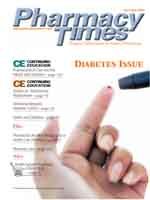Publication
Article
Pharmacy Times
GPOs and Supply Chain Management
The Group Purchasing Organization (GPO)industry has been in turmoil for some time.These organizations have been changingthrough merger and acquisition, but their focushas been on volume purchasing, memberrecruitment, and their own profitability. Otherwise theyhave been relatively stagnant.
Although it is easy to take cheap shots at GPOs, officialsof hospitals and health systems and their organizationalunits (pharmacy departments included) have not demandedmuch more. If their aggregate supply costs haveincreased at a slower rate than national benchmarks, hospitalexecutives have remained relatively satisfied. Given thatsupply costs are the second-highest expense for hospitalsafter labor, officials have been lulled into considering themselvessuccessful based on aggregate figures, without examiningwhich segments have been more successful than othersin holding down supply costs. Hospital executivesreceive periodic reports on contract compliance by department(pharmacy, radiology, etc), but it has been challengingfor hospitals to affect compliance or utilization for suppliesused throughout the hospital.
Supply chain management has been the watchword ofGPOs for years, but I am not sure that the officials of theseorganizations understand the complexity of the concept,especially with respect to pharmaceuticals. Their focus isusually on standardization for identical pharmaceuticalsand supplies and member compliance. Regrettably, theirnarrow focus results in a "one-size-fits-all" approach formember organizations through volume-purchasing agreementsthat benefit lower-volume organizations preferentially.
GPOs have done a reasonably good job of the contract-management,vendor-negotiations, and inventory-managementfunctions, including the development of tools tomeasure compliance and enhance performance. Utilizationand outcomes measurement functions, however, have beenlargely ignored and deferred to the member organizations.Individual hospital pharmacies have been performing drugutilization reviews for decades and have begun to measureoutcomes, but comparing institutional data among similarhospitals is rare.
I would argue that examining utilization and outcomesmeasurement is essential to determining the real value ofpharmaceutical use. Comparing the results of one's institutionwith those of others would likely result in learningfrom each other, determining best practices, and driving outunnecessary costs in a sustainable fashion. Given pharmacists'expertise and experience in performing these functions,GPO officials should consider starting with pharmaceuticalsand then replicating successful strategies inmanaging supply consumption.
GPOs have recently come under fire from the federal governmentfor some of their business practices. It seems to methat they have an excellent opportunity to reinvent themselves.This industry needs to redefine its role and createinnovative relationships with wholesalers, drug manufacturers,and individual customers. Services offered must beprioritized globally and tailored for individual accounts,depending on a customer's needs.
True value can be optimized if GPOs develop expertise inpartnering with hospitals to mine their own data and thenprovide true benchmarking data for comparison. GPOs needto resist aggregation of data by hospital type or size andinstead focus on benchmarking narrower business segments.Service lines examined could begin with an institution'scenters of excellence and those with high-volume orhigh-cost pharmaceutical care.
GPOs must pay attention to their customers' needs,despite the diversity of these needs, and bring sustainableadded value to the clinical enterprise. In my opinion, thisadditional value will come through developing partnershipswith pharmacy and collaboratively improving supply chainmanagement that is all-encompassing.







